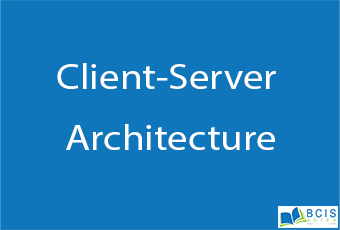
Client-Server Architecture
Client-Server Architecture is a computing model in which the server hosts, delivers, and manages most of the resources and services to be consumed by the client. This type of architecture has one or more client computers connected to a central server over a network or internet connection. This system shares computing resources. It is also known as a networking computing model or client-server network because all the requests and services are delivered over a network.
The Internet has brought a revolutionary change in the world of technologies, bringing the entire globe interconnected. But it follows some specific architecture and structure for communication. The popular is the client-server architecture which is a computing model, where the server hosts, distributes and controls the majority of the resources as well as services to be used by the client.
Such structural designs are made up of one or more client systems connected to central or main servers through a network, which we usually know as an Internet connection. All such systems associated with it share computing resources.
It is also termed as a network-computing structure because every request and their associated services are distributed over a network.
How does the client-server architecture works?
In the client-server architecture, when the client computer sends a request for data to the server through the internet, the server accepts the request, processes it, and delivers the data packets requested back to the client.
One special feature is that the server computer has the potential to manage numerous clients at the same time. Also, a single client can connect to numerous servers at a single timestamp, where each service provides a different set of services to that specific client.

If you liked our content Client-Server Architecture, then you will also like Introduction to Web Environment

Leave a Reply